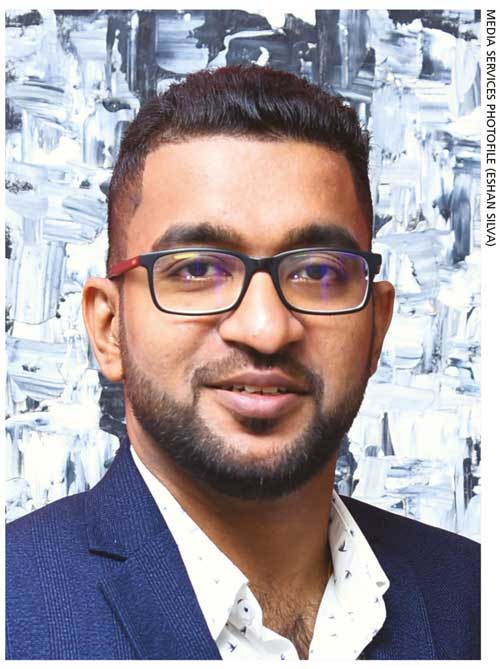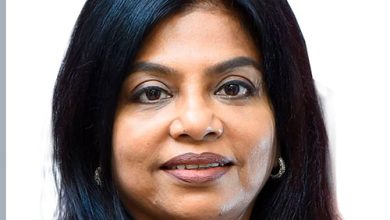Compiled by Allaam Ousman
THE PILLARS OF STRENGTH
Supun Hettiarachchi underscores the importance of credibility in reporting

Q: Could you shed light on how digital media is evolving in relation to its traditional counterpart?
A: Compared to traditional media, digital media has undergone a revolutionary change. It has resulted in an immediate global reach, personalised interactions and real-time audience engagement.
Moreover, we can drive our public relations strategies with precision thanks to data analytics and feedback made possible by digital spheres.
However, conventional media still holds credibility and can reach an audience that may not be accustomed to the world of the internet – particularly in Sri Lanka.
We frequently reap the advantages of both traditional and digital media in public relations to ensure the best possible outcome.
Q: What are the latest technological innovations impacting the media?
A: Innovation flourishes in the media industry and with communications in general. The AI revolution was unveiled to us in the first half of this year.
When local media directs more attention to such interactive experiences for consumers, it will be utilised for immersive audience experiences such as live reporting, entertainment and even enhancing educational content available through various media outlets.
Predictive analytics and data driven insights are being powered by artificial intelligence and machine learning, which is helping us better understand audience behaviour. By providing immersive experiences, augmented and virtual reality technologies are revolutionising how we interact with content.
There were occasions in the past where local organisations utilised such groundbreaking technologies. Consumption of content has changed as a result of the popularity of podcasts and streaming services.
Additionally, the use of chatbots and automation in consumer interactions is increasing. Keeping pace with these advancements is essential since it ensures that our efforts are relevant and powerful.
Q: Has the influx of social media as a means of communication impacted the media, in your view?
A: Yes, the media industry in Sri Lanka has been impacted by the influx of social media as a form of communication.
Many conventional media sources have increased their online presence and use social media platforms to reach a wider audience as a result of the industry’s need to adapt to shifting consumption habits.
We saw a great shift of this nature during the pandemic and the post-COVID era in Sri Lanka.
On the flip side, maintaining integrity and credibility in journalism in the digital age has been made easier with the prompt distribution of news and information through social media.
Q: What are the key challenges facing the industry?
A: There is a wide range of difficulties in relation to printing costs and advertising revenue. Since digital platforms are evolving rapidly, we must constantly adapt and keep pace with latest trends.
In a world where information spreads like wildfire, managing reputational crises and fake news are constant worries. It’s now more important than ever because of the growing demand for authenticity and transparency in the dissemination of news.
Maintaining moral standards while adhering to data privacy laws poses challenges in targeting and evaluating the effectiveness of PR campaigns as well.
Q: How can the proliferation of fake news be tackled?
A: Fake news is a problem that requires a diversified strategy. This entails fostering teamwork, utilising technology, fact checking, emphasising transparency, educating the public and if required, resorting to legal action.
Maintaining the integrity of information in the digital age requires a collaborative effort from all stakeholders in the fight against fake news.
Q: In what ways can media be helpful to people in general?
A: The media is an influential pillar in contemporary society because it offers information, education and entertainment; it ensures that individuals are aware of current affairs, government regulations and worldwide trends.
Additionally, the media offers a platform for various views, which is essential for sustaining democratic principles and freedom of expression.
The use of media by organisations to interact with target audiences, improve brand awareness and win trust is known as public relations. Overall, the media is crucial in influencing public opinion and promoting open dialogue.
Q: And last but not least, how would you describe competition in the world of media?
A: Although there is fierce competition, it’s a force that works both ways. On the one hand, it encourages innovation, and ensures that the industry is flexible and sensitive to the ever changing needs of audiences.
And on the other hand, it motivates media outlets to provide quality content and constructive competition. To garner wider attention, it might occasionally drive media outlets towards sensationalism.
As media professionals, competition inspires us to create compelling and genuine storylines that may stand out in a crowded media landscape. To ensure fair competition, it’s necessary for media organisations and professionals to uphold moral standards and prioritise accuracy in reporting.





